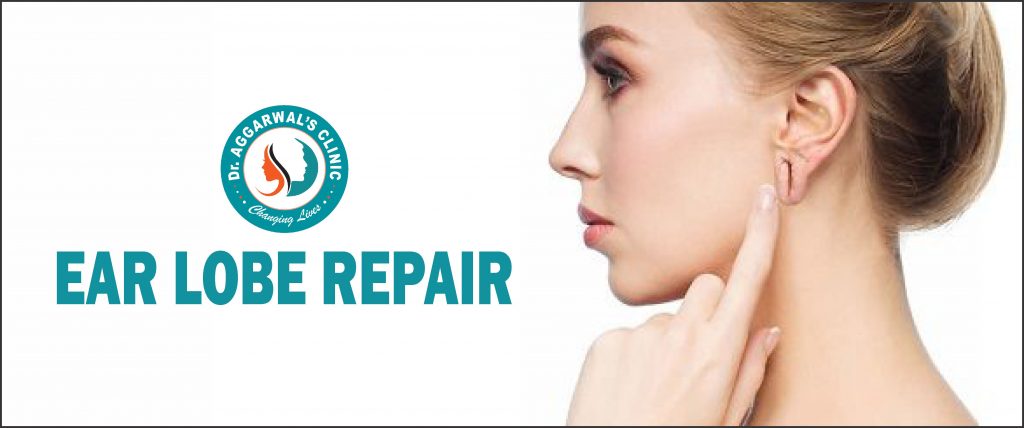Earlobe Surgery in jodhpur

Book An Appointment
Meet Our Team of Experts.
Dr. Karun Aggarwal is amongst one of the best Hair doctor in Jodhpur and this is claimed not only by us but also by many of his former and current patients. He is cited as one of the best for Hair Transplant in Jodhpur and can provide many types of Hair Loss Treatment in Jodhpur itself. He has completed his post graduation in facial plastic and maxillofacial surgery in 2011. He did his fellowship in Aesthetic Medicine and Laser from Germany and is a very trusted Facial Plastic Surgeon and Hair doctor in Jodhpur. Dr. Aggarwal is also a very experienced doctor for all types of hair problems and is a certified trichology expert who has performed many hair transplant surgeries successfully. He is one of the few doctors whose experience is coupled with genuine concern for his patients.
MAKE AN APPOINTMENT
Meet Our Team of Experts.
Dr. Karun Aggarwal is amongst one of the best Hair doctor in Jodhpur and this is claimed not only by us but also by many of his former and current patients. He is cited as one of the best for Hair Transplant in Jodhpur and can provide many types of Hair Loss Treatment in Jodhpur itself. He has completed his post graduation in facial plastic and maxillofacial surgery in 2011. He did his fellowship in Aesthetic Medicine and Laser from Germany and is a very trusted Facial Plastic Surgeon and Hair doctor in Jodhpur. Dr. Aggarwal is also a very experienced doctor for all types of hair problems and is a certified trichology expert who has performed many hair transplant surgeries successfully. He is one of the few doctors whose experience is coupled with genuine concern for his patients.
Earlobe
A swollen earlobe can be red, uncomfortable, and painful. The typical causes of earlobe swelling are infection, allergies, and trauma. While most earlobe injuries can be treated with over-the-counter medications and home remedies, you might want to see your doctor if your symptoms are really severe.
What causes this?
There are a number of causes for swollen earlobes. Each has its own set of symptoms.
Piercing
This is the most common cause of a swollen earlobe for most people. A certain amount of pain and swelling is normal at the time of piercing, which should go away in a matter of days.
Swelling may also be due to piercing rejection or an infected piercing. If the swelling and pain persist, it may be necessary to go see your doctor.
For people who use gauges, going up a gauge can cause similar symptoms.
Allergic reaction
Allergic reactions, especially to certain kinds of jewelry, can cause one or both earlobes to swell. In most allergic reactions, the nickel in earrings can cause inflammation and swelling. Removing the earrings and choosing to wear those that don’t contain nickel can help with any remaining symptoms.
Injury
Any injury to the earlobe can cause swelling — even an injury as minor as wearing earrings that are too tight. Along with swelling, injured earlobes may be painful and sore.
Hematoma Auris
Hematoma auris, also known as cauliflower ear, is an external deformation of the ear. It can occur after an injury to the ear. It’s most commonly developed in contact sports such as wrestling, boxing, and martial arts.
Hematoma auris occurs when blood collects in the outer ear. When the injury isn’t drained properly, it can result in infection and deformity. In addition to swelling, there may be bruising and pain.
Mastoiditis
Mastoiditis is an infection of the mastoid bone, located in the inner ear. The mastoid bone is structurally unlike other bones in the body. It’s made of air sacs and looks like a sponge.
Symptoms of mastoiditis, aside from redness and swelling, include:
- drainage from the affected ear
- pain
- fever
- headache
- loss of hearing
Infection
It’s also possible to get an outer ear infection, known as otitis externa or swimmer’s ear. These infections are most common in children ages 7 to 12 and people who swim often. The main symptoms of an outer ear infection other than swelling are:
- pain
- itchiness
- redness
- tenderness
Bug bite
An insect bite on the earlobe can result in both swelling and itchiness. If you wake up with a swollen and itchy earlobe, it’s possible you’re being bitten at night by bed bugs or other insects. First aid will depend on the type of insect that bit you.
Abscess
An abscess is a bump that occurs under or on the skin’s surface, signaling a collection of pus or fluid in a concentrated area. Typically, this is the result of a bacterial infection.
Because skin abscesses can appear on any part of the body, it’s possible to develop an abscess on the earlobe as well. The swelling that results from an abscess can increase over time, so it’s possible your earlobe will continue to swell if the abscess isn’t treated.
Depending on the cause of the abscess, you may also experience:
- fever
- nausea
- chills
- lesions
- inflammation
- fluid drainage from the infected area
Carbuncles and boils
A carbuncle is a grouping of boils. They’re both a skin infection that develops deep beneath the skin’s surface that can be filled with pus. The infection involves the hair follicles, and is often painful to the touch. A carbuncle’s size can vary.
Other symptoms may include:
- itching
- body aches
- fatigue
- fever
- crusting or oozing of the affected area
Cyst
Cysts of the skin are known as sebaceous cysts. They’re simply abnormalities of the skin that are filled with liquid or semiliquid material.
While not life-threatening, cysts can be uncomfortable. Because sebaceous cysts are most commonly found on the scalp, face, neck, and back, it’s not uncommon to find one on your earlobe. The bigger the cyst, the more likely that it’s painful.
Contact dermatitis
When a substance reacts with your skin, you can develop contact dermatitis. Besides swelling, you can experience itchiness, redness, and inflammation. These treatments may be helpful for contact dermatitis.
Poison oak, ivy, or sumac
Exposure to the leaves or stems of western poison oak, poison ivy, or poison sumac can result in an allergic reaction, causing a rash on the skin where it touched the plant. These plants release an oil when damaged that irritate the skin, leading to stinging, itching, and minor irritation. After some time, a red rash will develop and spread, growing itchier. Finally, bumps will form and turn into blisters that ooze before drying and crusting up.
If your earlobe is exposed to these plants, it’s possible that you’ll see swelling in this area, along with other symptoms of an allergic reaction.
Rash
A rash is a noticeable change in the condition or texture of your skin. It can be caused by a number of different factors, including:
- allergies
- medications
- cosmetics
- certain diseases, like chickenpox and measles
If you develop a rash on your earlobe, additional symptoms will depend on what exactly is causing the rash.
Cellulitis
Cellulitis is a fairly common bacterial skin infection. It’s usually painful and appears as a red and swollen area that’s hot to the touch. Because it can occur anywhere on your body or face, it’s possible to develop cellulitis on your earlobes. Additional symptoms include tenderness, rash, and fever.
Cellulitis can develop into a more serious condition. Contact your doctor immediately if you suspect you may have it.
Treatment options
There are a number of ways to treat swollen earlobes, but treatment will depend on the cause of the swelling.
First, you can try a few home remedies to bring down the swelling. A cold compress can decrease blood flow to the area, which can ease swelling symptoms. If you suspect you have a cyst on your earlobe, a warm compress can help. If your earlobe is painful, over-the-counter pain medication can also be helpful.
In the case of bacterial infections, you’ll need antibiotics. These can be taken either orally or applied topically.
For bug bites and other allergic reactions, you may want to try antihistamines or hydrocortisone topical cream.
When to see a doctor
In many cases, swollen earlobes can be taken care of with simple home remedies. However, in certain cases, it’s important to seek out help from your doctor. If home remedies don’t reduce the swelling of the earlobe and other symptoms, make an appointment with your doctor.
Additionally, if your earlobe is oozing greenish or yellowish pus, or if you’ve having a serious allergic reaction, contact your doctor. In the case of some cysts or abscesses, a doctor may need to drain the site. You’ll also need a doctor to prescribe you antibiotics if you’re experiencing a bacterial infection.
Prevention tips
To prevent a swollen earlobe, make sure to stay clear of things that can trigger allergic reactions and rashes. For example, avoid earrings containing nickel if you’ve had allergic reactions to this material in the past. It can also help to keep your ears clean. Use a cotton swab or damp washcloth only on the outside of the ear to clean it.
What’s the outlook?
A swollen earlobe can be indicative of many different health issues, so it’s important to pay attention to how it develops. Most of the time, it’s easy enough to treat at home, without a doctor’s help.
However, contact your doctor if the swelling doesn’t go down over time, home remedies fail to work, or if you suspect it’s a sign of something more serious.
Frequently Asked Questions
- Avoid wearing heavy earrings for a long time periods.
- Remove earrings when using the telephone.
- Remove earrings at the hair salon.
- Be aware that small children and babies are attracted to earrings.
- Remove your earrings before removing upper clothing, like sweaters.
- Do not allow children to wear small or dangling earrings.
Instead of a scalpel, which results in significant bleeding during the surgery as well as post operative swelling and bruising, he uses a high frequency radio wave surgical tool called the Ellman.
The Ellman tool can repair stretched and torn earlobes with minimal bleeding during the surgery as well as minimal post operative swelling and bruising.
All your earlobe repairs are performed with a sterile technique using local anesthesia.
They can choose to have it re-pierced with our Esthetician in our office or at a facility of their choosing.
The most common complications seen, although rare are a depressed linear scar and inferior notching of the lobe.
These complications can be easily repaired by Dr Karun using another tool called a CO2 laser.
When used for the undereye area, HIFU can achieve the following benefits. This multi-pronged approach targets and treats the 3 main factors that worsen eyebag appearance – muscle and ligamentous laxity, thin skin and accumulation of under eye fats.



